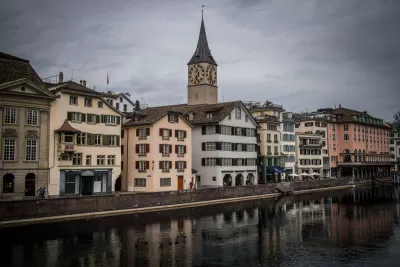Why is it that smallish cities in western Europe always score so well? Perhaps the underlying assumptions behind ostensibly data-driven "livability" rankings cater to a certain audience and leave most of us out.

Basing his critique on a recent livability ranking from Monocle, Feargus O'Sullivan argues that the way many media outlets approach "livability" among cities is highly suspect. "All are no doubt largely prosperous, high-functioning places," he writes. "But an overall feeling emerges from this cluster of familiar entries. These rankings provide less a universal assessment of livability—a word that comes with its own baggage—and more a snapshot of their compilers' tastes and worldview."
Zurich, for instance, which topped Monocle's list, "is a still-stratified society where high wages compensate for a degree of social stagnation, with migrants and Swiss from the wrong backgrounds enjoying good benefits and excellent tram links on the way to low-skilled jobs."
O'Sullivan also points to "a curious anti-urban slant" across many livability assessments that favorably pits cities of a few hundred thousand against megacities like Beijing or Bangkok. He writes, "it's hard not to wonder why these rankings tend to tap wealthy, smaller cities when larger, less wealthy ones may be making more radical, transformative improvements in life quality."
Though data-driven rankings may seem dispassionate, they still operate upon unstated assumptions. "They assess, broadly, how much potential a city possesses when seen from a privileged point of view: that of a straight, affluent, mobile, and probably white couple who works in something akin to upper management and has children. Remove even one of those characteristics from the equation and the results often seem way off the mark."
FULL STORY: Death to Livability!

Trump Administration Could Effectively End Housing Voucher Program
Federal officials are eyeing major cuts to the Section 8 program that helps millions of low-income households pay rent.

Planetizen Federal Action Tracker
A weekly monitor of how Trump’s orders and actions are impacting planners and planning in America.

The 120 Year Old Tiny Home Villages That Sheltered San Francisco’s Earthquake Refugees
More than a century ago, San Francisco mobilized to house thousands of residents displaced by the 1906 earthquake. Could their strategy offer a model for the present?

HSR Reaches Key Settlement in Northern California City
The state’s high-speed rail authority reached an agreement with Millbrae, a key city on the train’s proposed route to San Francisco.

Washington State Legislature Passes Parking Reform Bill
A bill that would limit parking requirements for new developments is headed to the governor’s desk.

Missouri Law Would Ban Protections for Housing Voucher Users
A state law seeks to overturn source-of-income discrimination bans passed by several Missouri cities.
Urban Design for Planners 1: Software Tools
This six-course series explores essential urban design concepts using open source software and equips planners with the tools they need to participate fully in the urban design process.
Planning for Universal Design
Learn the tools for implementing Universal Design in planning regulations.
Ada County Highway District
Clanton & Associates, Inc.
Jessamine County Fiscal Court
Institute for Housing and Urban Development Studies (IHS)
City of Grandview
Harvard GSD Executive Education
Toledo-Lucas County Plan Commissions
Salt Lake City
NYU Wagner Graduate School of Public Service





























